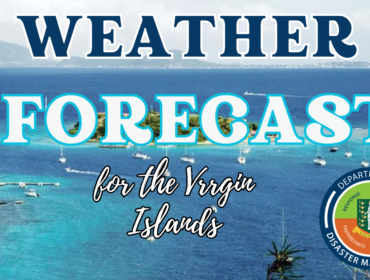Current
Location: 15.5N/64.0W
Geographic
Reference: 245 miles southeast of San Juan, Puerto Rico
Movement: West
at 16 mph
Max Winds: 45
mph
Organizational
Trend: Steady
Forecast
Track Confidence: Below average
Changes to Previous
Forecast
Forecasters
have adjusted their track a little further westward.
Forecast
There has
been little change in organization overnight as Emily tracks quickly westward.
Much of the heaviest rain has now moved west of the Lesser Antilles into the
eastern Caribbean Sea. There is still quite a bit of squalls that will affect
the Lesser Antilles and Virgin Islands later today and tomorrow.
Emily will
continue moving to the west-northwest over the next 12 to 24 hours, followed by
a turn to the northwest. Forecasters have adjusted the northwest turn further
west since Emily continues moving nearly due west at a rapid pace. The current
track will take Emily over far-western Haiti and eastern Cuba, followed by
landfall on the southern Florida Peninsula on Saturday. If Emily does not
intensify as expected, then a track farther to the west would be likely. This
could take the storm into the eastern Gulf of Mexico just to the west of the
Florida Peninsula. The confidence in the forecast track remains below average due
to uncertainty in the intensity forecast.
Forecasters
think that Emily will slowly strengthen as it tracks across the Caribbean Sea
over the next couple of days. There is only a slight chance that Emily could
become a hurricane in the Caribbean. Some weakening should occur as the system
moves over Haiti and eastern Cuba, but conditions across the Bahamas will be
favorable for strengthening. Forecasters are forecasting Emily to be a strong
tropical storm when it reaches south Florida on Saturday. Confidence in the
intensity forecast remains low.
Expected
Impacts on Land
Lesser
Antilles: Heavy squalls containing tropical storm force winds will
continue across the Lesser Antilles through today. 3-8 inches of rainfall are
expected. These rains could cause widespread flooding and mudslides.
U.S./British
Virgin Islands and Puerto Rico: The outermost squalls will move into the
area this afternoon/evening. Rainfall up to 4-8 inches will be possible, with
much higher amounts possible in the higher elevations of Puerto Rico. Tropical
storm conditions could impact the area Tuesday night into Wednesday, though forecasters’
current track does keep the stronger winds south of the Virgin Islands and
Puerto Rico.
Dominican
Republic (Santo Domingo area): Squalls may reach the area by Wednesday
morning. Rainfall up to 5-10 inches will be possible from Wednesday through
Thursday. Flooding and mudslides are likely.
Turks and
Caicos: Squalls should reach the islands by Thursday afternoon. Rainfall
totals of 4-10 inches will be possible.
Expected
Impacts Offshore
Eastern
Caribbean Sea: Conditions will deteriorate tonight as tonight and tomorrow
as Emily approaches. By Thursday night, the last squalls will exit the
Caribbean waters near Puerto Rico and the Dominican Republic.
Interests in the
Virgin Islands should continue monitor the progress of this system as it has
not left the vicinity of the territory. The possibility of Tropical Storm Force
Winds and heavy rainfall is possible as the system comes closer to Puerto Rico.
The 2011 hurricane season is projected to be very active. All persons should
have or should make the necessary preparations for the season. Please visit the
DDM’s website at www.bviddm.com and
subscribe to the DDM’s notification link.
Disclaimer:The Department of Disaster
Management (DDM) is not an official Meteorological Office. The Information
disseminated by the Department is gathered from a number of professional
sources used or contracted by the DDM to provide such information. This
information is to be used as a guide by anyone who has interest in local
weather conditions. By no means can the DDM or the BVI Government be held
accountable by anyone who uses this information appropriately for legal
evidence or in justification of any decision which may result in the loss of
finances, property or life.



